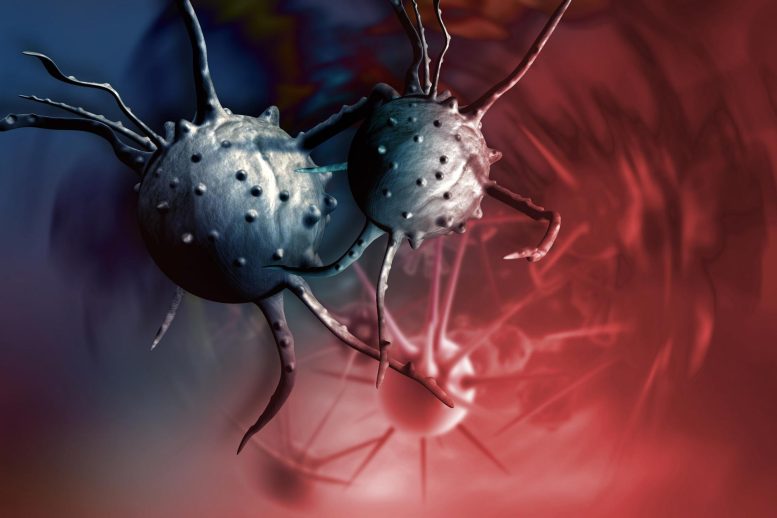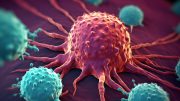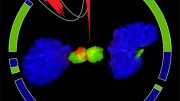
UC San Francisco scientists have discovered that neural activity in glioblastoma brain tumors restructures connections in surrounding brain tissue, causing cognitive decline, and have identified that the drug gabapentin can block this activity in mice. The study signals a new potential treatment approach by considering the communication networks between cells, suggesting it could impact not only glioblastoma but other neural cancers and metastatic brain cancers.
Glioblastoma, a notoriously hard-to-treat brain cancer, is known for causing cognitive decline as it infiltrates the brain’s neighboring networks. However, this aggressive encroachment could also serve as its downfall.
A team of researchers at UC San Francisco found that these lethal tumors can alter the structure of connections in the surrounding brain tissue through their neural activity. This restructuring leads to mental deterioration linked with the disease. Additionally, they discovered that gabapentin, a drug typically prescribed for seizure prevention, could obstruct this tumor growth-promoting activity in mice afflicted with glioblastoma.
The findings, appearing in Nature, provide a hopeful new direction for research on a disease that has defied even the most modern and sophisticated types of cancer drugs.
“Glioblastoma needs a win,” said neurosurgeon Shawn Hervey-Jumper, MD, who led the study along with postdoctoral scholar Saritha Krishna, Ph.D. “This study opens the door to a whole world of treatment possibilities for these patients and a new way of thinking about brain cancer.”
When Hervey-Jumper was beginning his study, scientists had recently discovered that brain tumors are fueled by a positive-feedback loop. It begins when cancer cells produce substances that can act as neurotransmitters. This “extra” supply of neurotransmitters spurs neurons to become hyperactive, which in turn stimulates the growth of the cancer cells.
Building on earlier studies done on mice and brain organoids (small bundles of neurons derived from human stem cells grown in Petri dishes), Hervey-Jumper focused on what the feedback loop meant for human behavior and cognition in brain cancer.
The team recruited volunteers awaiting surgery for glioblastoma whose tumors had infiltrated the brain region controlling speech. Just before operating on the tumor, Hervey-Jumper placed a grid of tiny electrodes on the surface of the speech region, showed the volunteers pictures, and asked them to name what they saw.
The research team then compared the results with normal-appearing non-tumor regions of the brain from the same participants. They found that the participants’ tumor-infiltrated brain regions used a broader neural network of brain area in the effort to identify what they were seeing.
Cancer as a Conversation Between Cells
Hervey-Jumper attributes this to the degradation of information-processing power in that region of the brain. He likens it to an orchestra where it’s the musicians playing in synchrony that makes the music work.
“If you lose the cellos and the woodwinds, the remaining players just can’t carry the piece the way they could otherwise,” he said. The brain cells bound up in the tumor are so damaged that others must be recruited from farther out to perform the tasks that used to be controlled by a smaller area.
The study shows that it’s this interaction between cells that cause the cognitive decline associated with brain cancer, rather than inflammation and pressure from tumor growth, as scientists had thought.
“A brain tumor isn’t just sitting there dying,” said Hervey-Jumper. “It’s being regulated by the nervous system. It’s having conversations with the cells around it and actively integrating into brain circuits, remodeling the way they behave.”
We Haven’t Thought About Cancer in This Way
Now, the researchers knew that the tumors were taking advantage of the brain’s networks. So, they turned to gabapentin, which controls seizures by tamping down excess electrical activity in the brain, testing it in mice engrafted with human glioblastoma cells.
“Gabapentin actually kept the tumor from expanding,” said Krishna. “This makes us hopeful that combining gabapentin with other glioblastoma therapies could stave off some of the cognitive decline we see in patients and perhaps extend their lives.”
The findings will likely translate to other neural cancers, such as those of the spine, and may help explain why the brain is the first site of metastasis in many cancers.
Hervey-Jumper said the study encourages cancer specialists to consider communication networks between cells, like the positive-feedback loop in glioblastoma, as potential targets for treatments, along with genetic and immunological approaches.
“We haven’t thought about cancer in this way before,” he said. “The idea that there’s conversation between cancer cells and healthy brain cells is something of a paradigm shift.”
Reference: “Glioblastoma remodelling of human neural circuits decreases survival” by Saritha Krishna, Abrar Choudhury, Michael B. Keough, Kyounghee Seo, Lijun Ni, Sofia Kakaizada, Anthony Lee, Alexander Aabedi, Galina Popova, Benjamin Lipkin, Caroline Cao, Cesar Nava Gonzales, Rasika Sudharshan, Andrew Egladyous, Nyle Almeida, Yalan Zhang, Annette M. Molinaro, Humsa S. Venkatesh, Andy G. S. Daniel, Kiarash Shamardani, Jeanette Hyer, Edward F. Chang, Anne Findlay, Joanna J. Phillips, Srikantan Nagarajan, David R. Raleigh, David Brang, Michelle Monje and Shawn L. Hervey-Jumper, 3 May 2023, Nature.
DOI: 10.1038/s41586-023-06036-1
The study was funded by the National Institutes of Health, Robert Wood Johnson Foundation, and the American Brain Tumor Association.









Be the first to comment on "Scientists Discover Hidden Weakness of Deadly Brain Cancer"